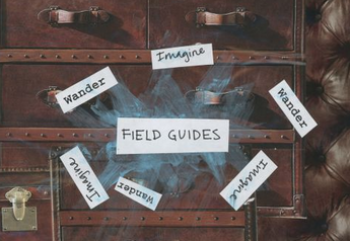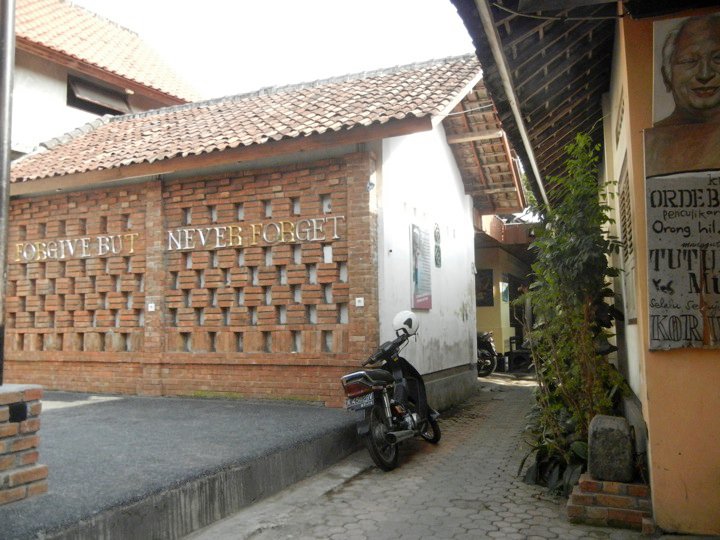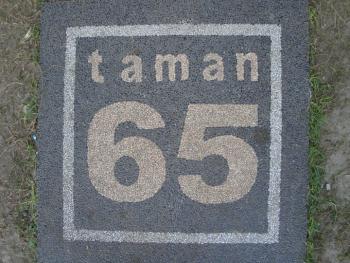Serendip is an independent site partnering with faculty at multiple colleges and universities around the world. Happy exploring!

Diffracting
I was thinking about my process for the "Teach In" when I read the objectives of this "diffracting" assignment - I think that I was already starting to diffract, trying to understand my process of learning in this class. So, with that as a background, I'll consider the specific areas of review.
Group work/Participation - I think that I have been very "present" in class. Participation for me, sometimes is just critical thinking and note-taking - I have to wait for a while before I start to see connections in the material. Sometimes, participation meant that I had to work through those connections out loud. I think I was more focused on my own learning in this class than on others' learning, though I did make an effort to ask questions and encourage other people's writing online. Over time, as we got to be more comfortable with one another, I felt that I could be more vulnerable, in some ways - especially during the final teach-in.

Video Reflection: "Standing on Walls"
http://www.youtube.com/watch?v=KvwFc-6kWys
When Danielle and I first started envisioning our final project, we were both very drawn to the idea of looking at privilege. Danielle had been thinking about doing a zine on the topic of privilege, but when we discovered our mutual interest in video-making, we thought that might be another way of sharing the thoughts that have come out of our class in an accessible and fun way. We really wanted to look at how Bryn Mawr impacts and is impacted by differences in privilege and one of the places we started our search was the classroom.
In order to avoid stigmatizing a specific professor or set of students, Danielle wrote a script that we used as the basis for our fictional classroom scene. One of the things I’ve really noticed as a result of practicing silence and thinking about how much space my words take up in the classroom – as well as comparing our Bryn Mawr speaking experience with being in the Cannery – was how people’s notice of vocal space (or lack of notice) really impacts the classroom environment.

Our Own Spiral Jetty, Protruding Uncomfortably Into Our Minds
Hey guys,
For my final project I made a Prezzi presentation that will take you on a virtual tour of the Bryn Mawr campus via everyone's observation sites. The tour moves cylclically through campus, beginning on the outer edges of the campus and resolving right in the center. However, feel free to move about it in any directino and order you wish. This is meant to be my personal interpretation of the campus and the semester, but that does not mean you have to limit yourself to my view.
At each location on the map, I have included one of the images each class memeber used to visualize their sites to the rest of us, as well as two photos I took. One is from very far away from the spot, and the other is much closer. I would sit in each spot until I found a shot I could take that i believed captured an element of this specific location that had previously been unseen. By doing this, I hope I challange your preconcepts of the observations spots we've come to know so well this semester.
Here's the link to the Prezzi. Please view before continuing to read!
http://prezi.com/icqirmisr55c/prezi-5/?auth_key=1aea080f0b2503e21471c3aeaa22e72b078be2f3&kw=view-icqirmisr55c&rc=ref-27566299

Teach In: Blue Mind
For our final teach-in, I played Blue Mind, by Alexi Murdoch. Rather than focussing specifically on the content that interested me in this course, I wanted to demonstrate how my own learning process has developed.
I think the lyrics of this song compliment my personal trajectory really well. The first stanza is somewhat vague - what does it mean? no time? sleeping? I feel some confusion (though calm) when thinking about these lyrics. At the start of the semester, it seemed as though we were trying out a lot of different things, and just getting immersed in the content. I struggled with that immersion.
In the second stanza ("go free of time") - This represents the moments in class when I started to let go, let learning happen or not happen. I had to hibernate, gel, that sort of thing - I had to stop trying to control the outcome, something that I am still struggling with.
The chorus, "slowly slowly I am drifting," keeps coming back to me. In class, I felt as though I was drifting at times, and I could do this either by choice or by need. I want to choose to drift, especially if it's going to happen anyway. This feels a lot like "wandering" to me -

Field Guides: Wandering and Imaginging
When do you need a guide? When do you guide yourself?
My "guides" are available online in magazine formatting at: http://jil.st/vVZTyB
If you'd like to download some of the images, they are available in this dropbox folder: https://www.dropbox.com/sh/sstmzd4b742lmeg/-Ctwt0BuxR (it might be easier to view them this way?)


Self-Evaluation: An "end" that will surely last a lifetime!
In the beginning of the semester, I think my learning was largely centered on my personal relationships to the themes of each class. For one, my life (for example, silence in my home) was the only platform I had at the time and two, I did not know how to move forward with Silence, Voice and Vision if I did not start with my own experiences. So, when reading through my early work, I notice that a lot of my thoughts focused on the value of personal experiences in the classroom which I mainly wrote about in paper I for Jody. Today, I still see the value--they make us invested in the work we do/each other and I am thankful for the fishbowl activities in Jody’s and Anne’s class that did this--but I now see the dangers of bringing personal experiences to the forefront and relying on them too heavily.

A Classroom Without Walls
Joining this class was one of the biggest risks I’ve taken with my education. I was already taking an introductory language course, which required meeting every weekday for class, and I was taking a 360 course cluster that required an intense amount of attention and dedication. I had just come from taking three courses the previous Spring semester because I had been on academic probation upon my return from a required semester away from Bryn Mawr. I had been required to take time off because I was unable to complete several of my courses freshman year. From a very early point in my life, I’ve been identified as notoriously unable to finish everything I touch. From a plate of food, to drawings, conversations, papers- to quote my mother, I’ve never been able to “cross the finish-line.” As I’ve grown in my learning, I’ve come to appreciate some of the ways in which I allow myself room to grow, to add, to change and edit myself. However, adding a fifth course, in addition to my course load and my history seemed ludicrous to most of my friends. I persisted because there was something about the idea that I couldn’t let go of in my head. The reasons I spoke about were because I have many requirements to make up because of time off and because I was very interesting in the course subject. Looking back now though, I think I also took this course because I had something to prove- to my friends, my family and myself. I had to push the limits of my capabilities for once, and stop playing safe cards. I needed to know how far I could go, and if I could go further.

From Individual to Collective, and Sometimes Back Again
I had more trouble working on this class through Serendip than I have with any other classes I’ve used Serendip for. I think that was because most of our class postings were so personal that they were hard to comment on. Yes you can discuss someone else’s experience, but there is only so much talking back I feel you can do because even reading about experience cannot place you there the same way the author was placed there. You can read, you can learn, but it won’t ever fully be yours. I’m not sure if other people felt the same way, but I definitely saw less discussion on Serendip, and I know that I engaged in less.





